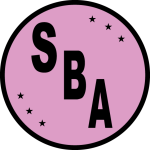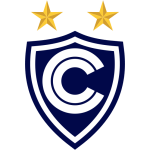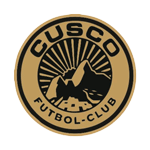| Coach | NA |
| Venue | Estadio Miguel Grau del Callao |
Sport Boys Trivia
Sport Boys predictions
Predictions for Sport Boys: See upcoming and historic predictions for Sport Boys below.
Disclaimer: Past performance does not guarantee future results. Betting involves risk; only wager what you can afford to lose. Always gamble responsibly.
Sport Boys Opinions
 Who is the most iconic player in Sport Boys history?
Who is the most iconic player in Sport Boys history?
Sport Boys latest results
| 14/04 | - | ||
| 05/04 | - | ||
| 24/02 | 3 - 0 | ||
| 18/02 | 3 - 2 | ||
| 11/02 | 2 - 0 |
Primera División standings
| Rank | Team | MP | W | D | L | GF | GA | GD | Pts |
|---|---|---|---|---|---|---|---|---|---|
| 1 |
 ADT
ADT
|
0 | 0 | 0 | 0 | 0 | 0 | 0 | 0 |
| 2 |
 Alianza Atletico
Alianza Atletico
|
0 | 0 | 0 | 0 | 0 | 0 | 0 | 0 |
| 3 |
 Alianza Lima
Alianza Lima
|
0 | 0 | 0 | 0 | 0 | 0 | 0 | 0 |
| 4 |
 Atletico Grau
Atletico Grau
|
0 | 0 | 0 | 0 | 0 | 0 | 0 | 0 |
| 5 |
 Carlos A. Mannucci
Carlos A. Mannucci
|
0 | 0 | 0 | 0 | 0 | 0 | 0 | 0 |
| 6 |
 Cienciano
Cienciano
|
0 | 0 | 0 | 0 | 0 | 0 | 0 | 0 |
| 7 |
 Comerciantes Unidos
Comerciantes Unidos
|
0 | 0 | 0 | 0 | 0 | 0 | 0 | 0 |
| 8 |
 Cusco
Cusco
|
0 | 0 | 0 | 0 | 0 | 0 | 0 | 0 |
| 9 |
 Cesar Vallejo
Cesar Vallejo
|
0 | 0 | 0 | 0 | 0 | 0 | 0 | 0 |
| 10 |
 Deportivo Garcilaso
Deportivo Garcilaso
|
0 | 0 | 0 | 0 | 0 | 0 | 0 | 0 |
| 11 |
 Cultural Santa Rosa
Cultural Santa Rosa
|
0 | 0 | 0 | 0 | 0 | 0 | 0 | 0 |
| 12 |
 FBC Melgar
FBC Melgar
|
0 | 0 | 0 | 0 | 0 | 0 | 0 | 0 |
| 13 |
 Sport Boys
Sport Boys
|
0 | 0 | 0 | 0 | 0 | 0 | 0 | 0 |
| 14 |
 Sport Huancayo
Sport Huancayo
|
0 | 0 | 0 | 0 | 0 | 0 | 0 | 0 |
| 15 |
 Sporting Cristal
Sporting Cristal
|
0 | 0 | 0 | 0 | 0 | 0 | 0 | 0 |
| 16 |
 UTC
UTC
|
0 | 0 | 0 | 0 | 0 | 0 | 0 | 0 |
| 17 |
 Universitario
Universitario
|
0 | 0 | 0 | 0 | 0 | 0 | 0 | 0 |
| 18 |
 Union Comercio
Union Comercio
|
0 | 0 | 0 | 0 | 0 | 0 | 0 | 0 |
About Sport Boys
Sport Boys Association, commonly known as Sport Boys or simply Boys, is a renowned football club based in Callao, Peru. Founded on July 28, 1927, by a group of young enthusiasts led by David Dasso, the club has a rich history that spans over nine decades. Sport Boys is known for its distinctive pink and black striped jerseys, a color scheme chosen to represent a blend of strength and delicacy.
The club's home ground is the Estadio Miguel Grau, named after a Peruvian naval hero. With a seating capacity of approximately 17,000, the stadium has been the site of many memorable moments in the club's history. The club's mascot, a sailor named "El Morro" after the iconic La Punta landmark in Callao, is a symbol of the club's maritime roots.
Sport Boys has a proud record in Peruvian football, having won the Peruvian Primera División, the top-flight of Peruvian football, six times. Their first league title came in 1935, just eight years after their formation. The club enjoyed its most successful period in the late 1940s and early 1950s, winning three league titles in a span of six years. The last of these titles came in 1951, marking the end of a golden era for the club.
Despite their early success, Sport Boys has faced numerous challenges over the years. Financial difficulties and inconsistent performances on the pitch led to several periods of struggle. The club has been relegated to the Peruvian Segunda División, the second tier of Peruvian football, multiple times. However, each time they have shown resilience and fought their way back to the top division, demonstrating the fighting spirit that is a hallmark of the club.
Over the years, Sport Boys has been home to many notable players who have left their mark on Peruvian football. These include Teodoro Fernández, Peru's all-time leading goal scorer, and Guillermo Delgado, who represented Peru in the 1930 World Cup. The club has also been a stepping stone for many young talents who have gone on to achieve success at higher levels.
Despite the ups and downs, Sport Boys has remained a beloved institution in Callao and beyond. The club's passionate fan base, known as the "La Banda del Basurero", is renowned for their unwavering support. They are known for creating an electrifying atmosphere at home games, cheering on their team through thick and thin.
Today, Sport Boys continues to be a significant part of Peruvian football. The club is committed to nurturing young talent and aims to return to the heights of its past glory. With a rich history, a dedicated fan base, and a resilient spirit, Sport Boys remains a symbol of pride and passion in Peruvian football.















